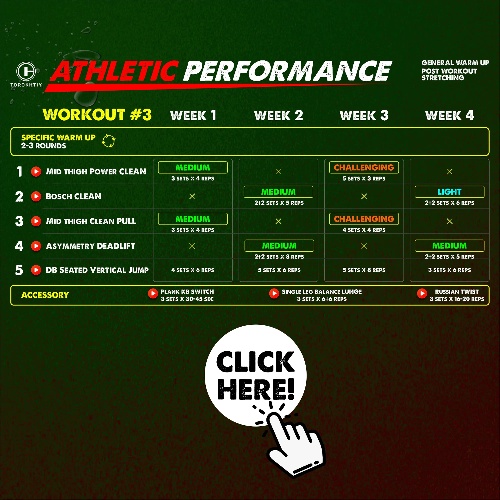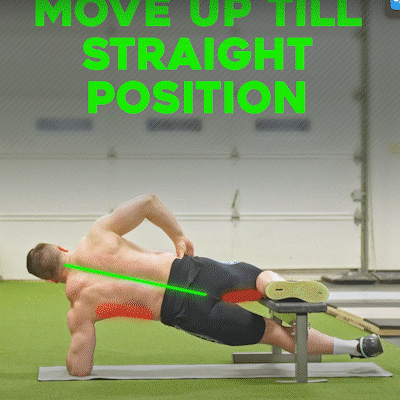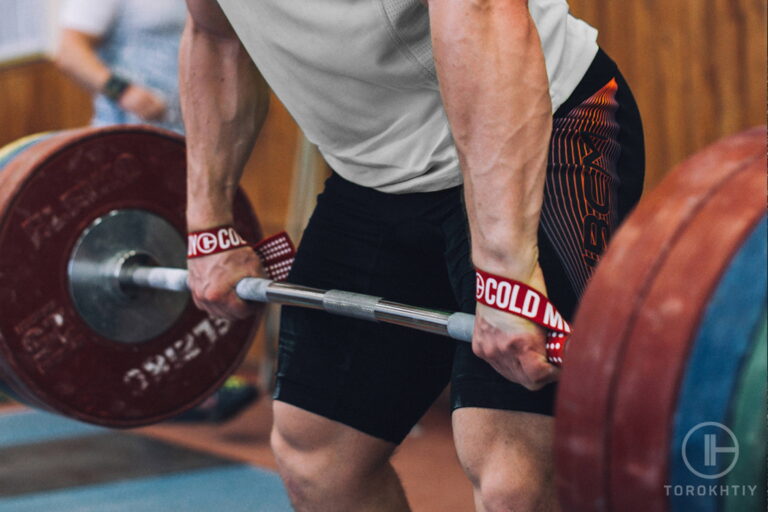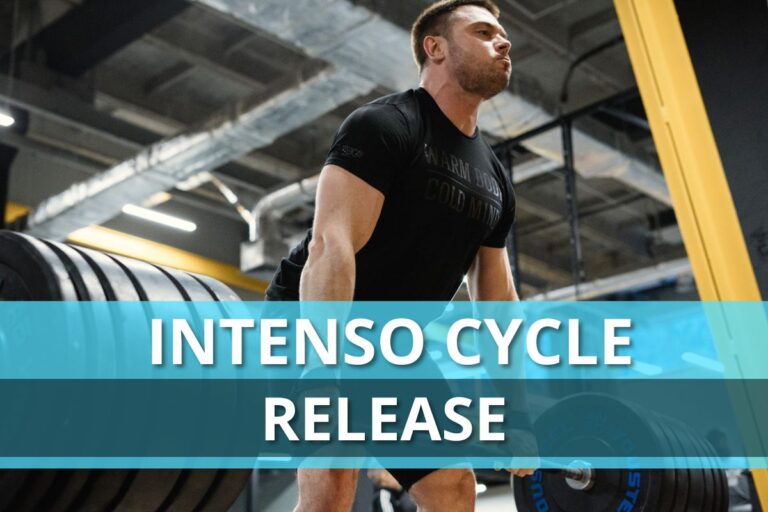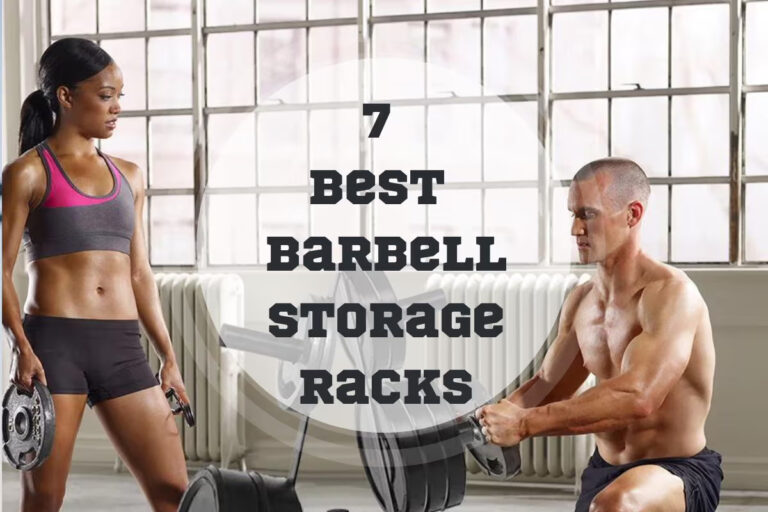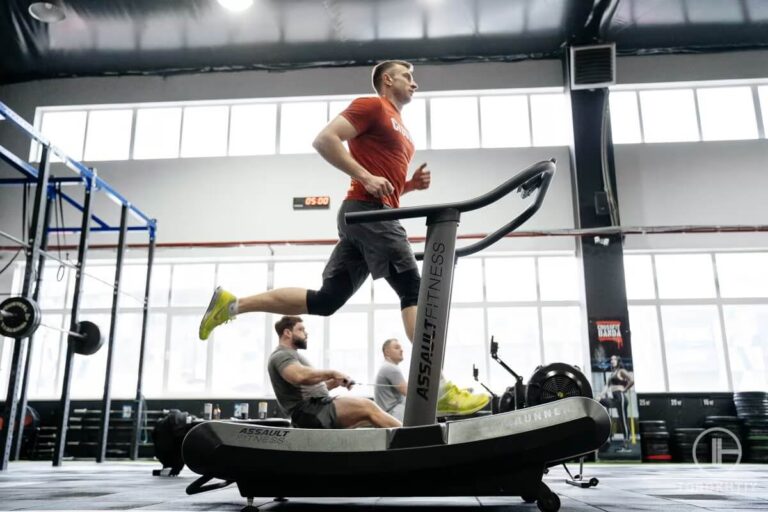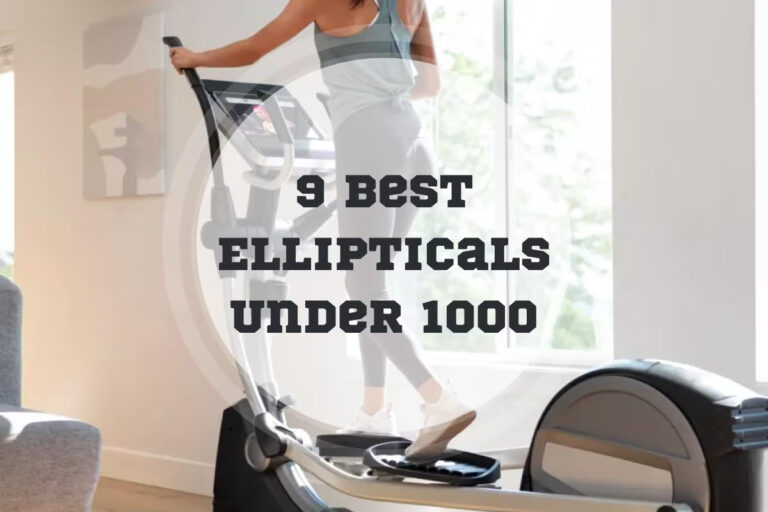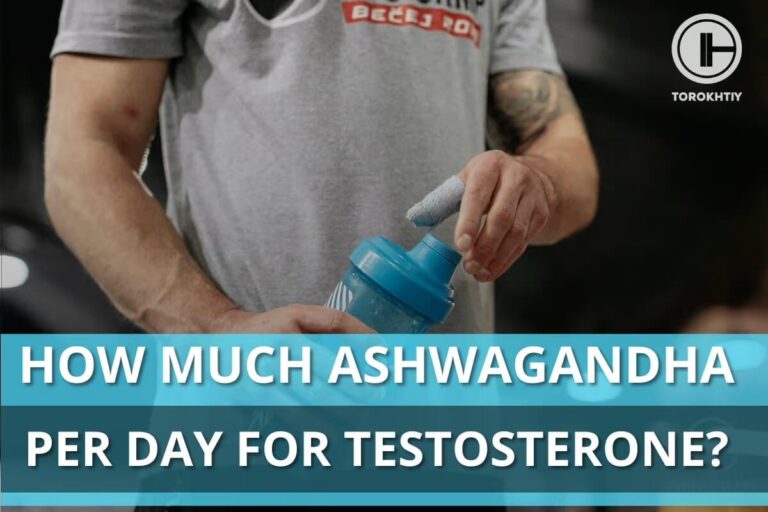Strength Training for Basketball Players (Detailed Program)
Reviewed by: Oleksiy Torokhtiy (21 years of Oly Lifting experience)
Whilst many might argue that basketball is a sport that requires you to be flexible and well-adjusted to quick movements, weight lifting is something you often see. The goal of weightlifting is to increase overall strength when we take it over to the world of basketball.
Should basketball players lift weights? Weight lifting for basketball is the perfect way to build strength and ward off defenders for that competitive edge.
Whilst your NBA players do not need to look like professional bodybuilders, having access to the extra strength provided by a basketball weightlifting program is something they can use to break free from contact and even power through some defenders. This is why weight lifting for basketball is popular for increased strength training.
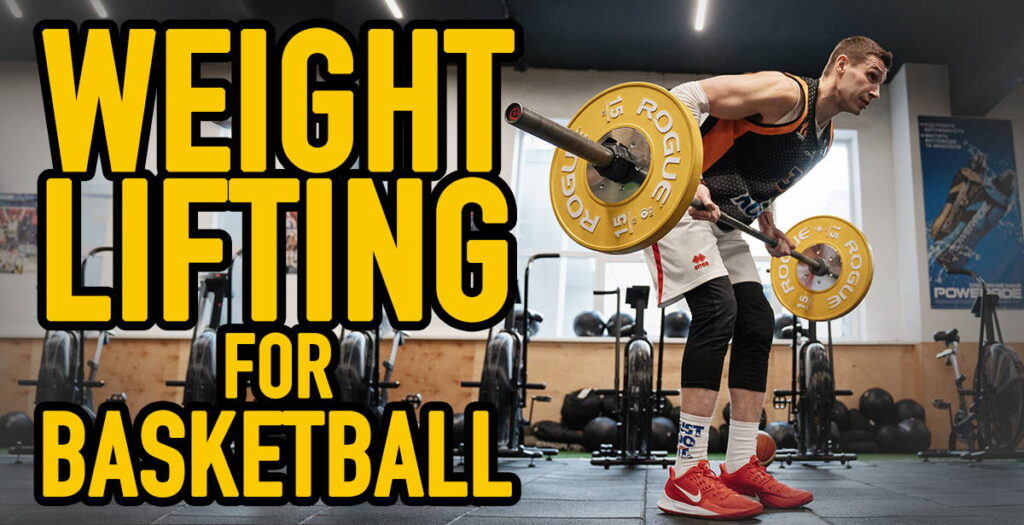
What Is Strength Training for Basketball Players
A basketball weight training program can be a complicated endeavor if you have never done it before. You might have heard about how lifting can improve strength and your presence to catch those rebounds in traffic, but the question is what is strength training for basketball players, and which muscles are typically used during a game.
If you jump into a typical basketball lifting workout, you are often left confused as the programs might skip over some of the basics and jump directly into some of the more complicated things like plyometrics and advanced agility exercises. To give you an idea of where to start, we should look at the most used muscles in basketball.
Legs (All Muscles)
The legs are the most muscles when it comes to basketball; It is hard to directly point to specific muscles as all of them are used during the game. Specific focus on the hamstrings, glutes, quads and calf muscles will all be important and should be strengthened. Not only will it make life easier, but also prevent injuries.
Back Muscles
Much like the legs, the muscles and spine are responsible for keeping the player upright and allowing them to move around. The back will work especially hard for those long three-point throws that often require you to use some of the power coming from the back to launch the ball up in the air and through the hoop.
The lower back should be one of the muscles that you place plenty of emphasis on when it comes to training for basketball games. It would not only help you prevent injuries but improve your flexibility and maneuverability whilst on the basketball court.

Shoulders And Arms
While not as important as some of the other muscle groups, strong arms can help you make massive strides in fending off some defenders. Not only does it help you with defenders, but you can defend much better when it is your turn to defend the ball.
The same goes for shoulders, which would enable you to have more power in shots and more functionality when performing moves to outwit your opponents. Whilst they are not the most important muscles, they are still important for most basketball players.
Benefits Of Strength Training for Basketball Players
Whilst many people might be under the guise that strength training is only for those that want to build big muscles, there is plenty of value in it for basketball players. Most basketball players will see one of all of the following benefits when they add a basketball weightlifting program to their regime:
Injury Protection
Injuries are not quite as high in basketball as they would be in things like downhill mountain biking, but a recent study has found that there are about 19.1 injuries per 1000 athlete exposures. Whilst this might seem low, you could be the one losing or missing out on a few games due to injuries and prevention is the way to go.
Strength training will not only help strengthen the muscles, but also improve the overall flexibility when you are playing on the basketball court. It will build up larger muscles around the tendons inside the joints, which removes some of the pressure they need to deal with. This would significantly reduce the possibility of straining a muscle or tendon.
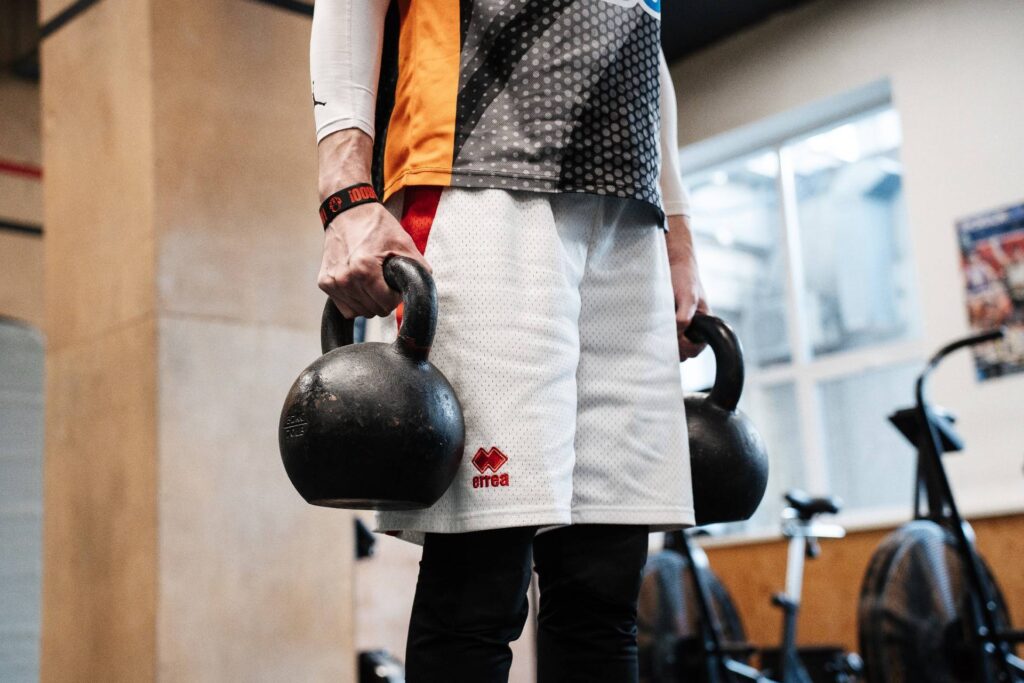
Improve Functionality (Build Muscle – Lose Fat)
If you are fast and you are skilled, weight does not always matter in basketball. However, overweight individuals tend to be slower and they cannot move as quickly. Due to the fast-paced nature of basketball, having less fat is beneficial to reduce carrying any excess and redundant weight.
Since weight training promotes the gain of lean muscle tissue, it will also speed up your metabolism by making your body more anabolic. This could help you speed up on the court and lift your performance.
Mental Sharpness
If stress is something that is bogging you down in your personal life, your thinking on the basketball course could be impeded. Not only will this reduce your mental sharpness, but it also distracts you from playing the game when you worry about personal problems.
Strength training is shown to reduce levels of cortisol, which is an important hormone when it comes to stress levels on and off the court. This is why many people make a habit out of strength training. It also provides a solid feel-good factor.
Learning New Skills
Many people might think that running and drills will be all you need. However, this is not the case and weight training could provide you with a whole host of new skills. Certain weight training exercises like squats and deadlifts can provide you with a new level of balance and coordination that drills simply cannot do. These skills can be used whilst playing the game to give you more functionality and control.
Increased Power Output
Being a fast-paced game, basketball required plenty of explosive energy. If you are someone of normal length and stature, a ten-foot-high basketball hoop can feel intimidating. However, it is the explosive power generated by players that allow the Michael Jordans and Kobe Bryants of the world to make those massive dunking leaps.
Strength training enables you to build this power that you would need and should make it much easier when you need to make those dunking shots. You can out-jump your opponents, not to mention being quicker out of the blocks.

Best Strength Training Exercises For Basketball Players
If you agree with me that strength training is the way to go when you want to improve your basketball capabilities, the next question is which training exercises are important to consider. The following list is a few of the top strength training exercises often recommended to basketball players to improve their games:
Front Squats
The legs are the most important factor when it comes to basketball players. Players are often built from the ground up, which means that having a solid foundation is important. Front squats will target the upper thighs and the glutes, which would give you a firm and solid base to move around from on the court.
Chin-Up
Whilst basketball players might “push” the ball out of their hands when playing, they often use more pulling strength to pull players around when defending. Not only does this require plenty of powerful grips, but also strength from the back and biceps. The traditional chin-up with a full range of motion is one of the best exercises to target both of these muscles and improve grip.
Lunges (Power Lunge)
As previously mentioned, having explosive power is an important part of being a basketball player and you will need to make sure that you can jump as high as possible. The vertical jump is often one of the determining factors when players head from college to the NBA draft.
One of the best ways to improve your jump is performing the lunge, the power lunge to be more specific. It will focus on strengthening the glutes and the hamstring muscles, while also working the front of the leg. This will help you generate enough power to jump over competitors and dunk.
Dumbbell Jump Squat
With the front squat already one of the best exercises, adding a few variations to existing exercises can also be of great benefit. One of these exercises will be the dumbbell jump squat. Much like the squat, you will be using about 30% of your 1 rep max. With the dumbbells by your side, you can dip down into the squat position and explode up into a jumping motion.
This is an excellent exercise for improving your explosive power, which also helps with jumping for rebounds and winning the ball.
Push-Press
Another great exercise to consider would be the push press. This exercise targets a large chunk of your muscles but puts heavy emphasis on coordination. You should be able to coordinate between the upper and lower body to ensure a smooth movement of the barbell to the sky. You can start with a low weight and slowly build up the power to go heavier.
Bench Press
The bench press is arguably the most popular upper-body exercise. However, it is still one of the most effective exercises for building upper body strength. Bench press targets the chest muscles and the triceps, which makes it easier to push away defenders and keep them at bay with your arm when in possession.
Bent Over Rows
Pulling is an important action that you will be performing when you are playing basketball. Whilst chin-ups are some of the best exercises to help strengthen the “pull” muscles, bent-over rows are just as great. Not only does this exercise focus on promoting the grip strength that you could need, but it will effectively strengthen the upper back muscles.
Clean High Pull
Finally, the clean high pull is one of the underrated exercises that is often referred to as a ‘triple extension movement’. Targeting the knee, hips, and ankles, this exercise would target three of the major joints as well. When performed correctly, you will build significant muscle, which promotes explosive power to catch those rebounds.
Key Factors In Basketball Player’s Training Routine
Before we look at a description of the recommended program, we should also look at some of the essential factors that play a role in the training routine of basketball players. Thanks to so many players like Dwayne Wade and others being vocal about their routines, we can gain insight into what they do to be the best.
Diet & Nutrition
You might think that basketball players burn so many calories, they don’t need to diet. However, the goal here is not specifically to lose weight. Basketball players are like all other sports athletes that follow a highly nutritious diet to ensure they get all the minerals and vitamins. The diet is also tailored to help them recover much faster and build muscle better.
Training Variations
Unlike other people that hit the gym every day and follow a solid training program, basketball players need flexibility. Since they cannot spend the whole day in the gym, their workouts are structured. You will find them broken up into power training, agility training, basic drills and skills, and overall fitness. Don’t overdo one of the other.
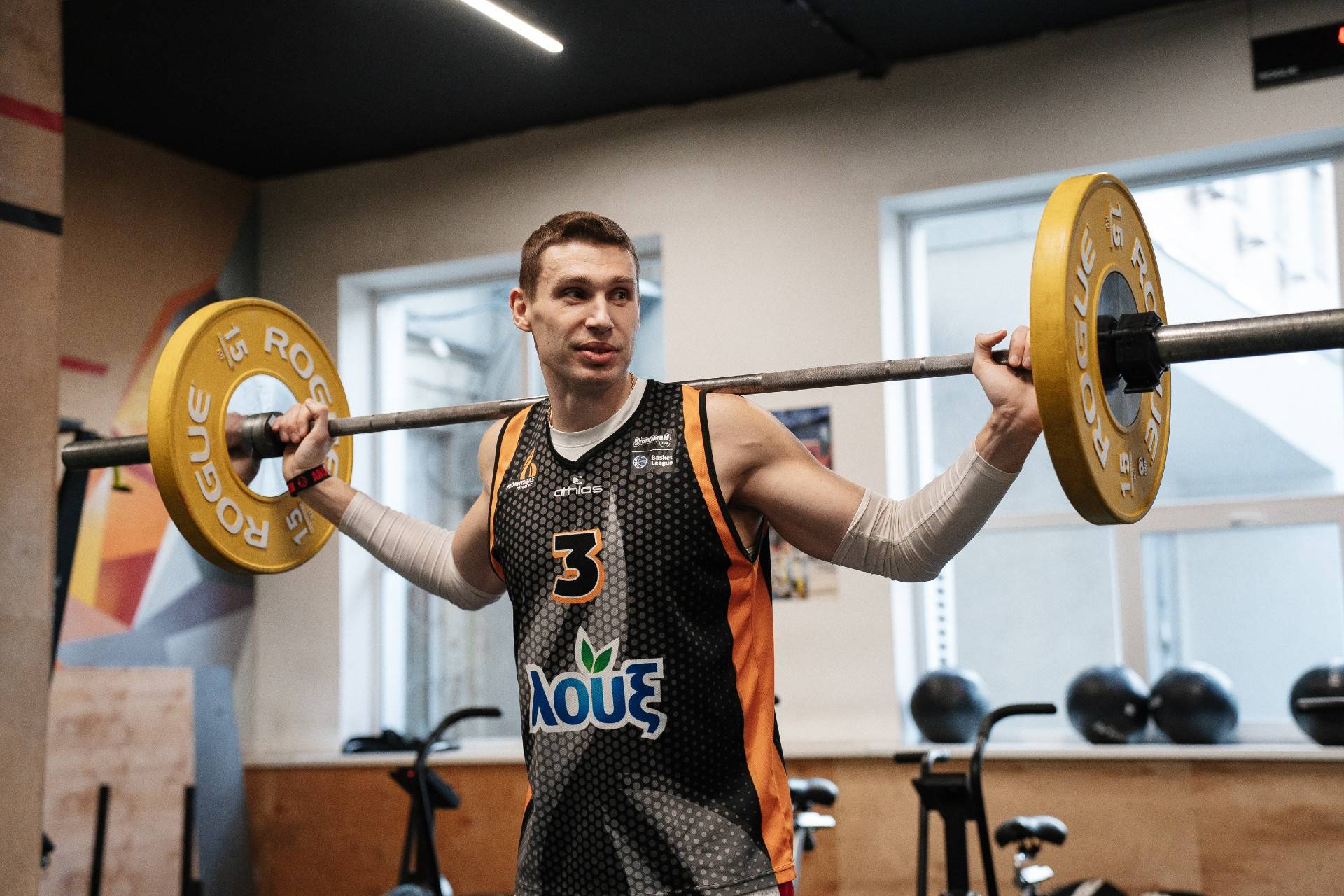
Dedication
Kobe Bryant never looked like the best player after entering the NBA. He was tall, but not the tallest, and fast, but not the fastest. However, his work ethic and relentless drive to be the best was the main driving factor. As a basketball player, you will need to be dedicated and find a training routine that you can stick to over time.
Rest
Finally, resting is important for basketball players and with enough rest, you give the body time to recover. The last thing any coach wants is a player straining muscles due to overtraining or general fatigue. Basketball players must take the time to rest and recover, especially a few days before and after the game.
Basketball Players Strength Training Program
If you consider yourself a newbie and you are looking to improve your strength for basketball, you will find numerous weight lifting programs for basketball players. The following basketball lifting program is a very basic and easy program that any athlete can follow. This will be a great way for beginners to improve their overall strength for baseball:
| Day 1 | Day 2 | Day 3 | Day 4 |
| Warm-Up | Warm-Up | Warm-Up | Warm-Up |
| Bench Press (3 x 12/15 reps) | Back Squats ( 3 x 12/15 reps) | Pull-Ups (3 x failure) | Split Squats ( 3 x 8/12 reps) |
| Chin Ups (3 x failure) | Leg (3 x 12/15 reps) | Incline Press ( 3 x 12/15 reps) | Deadlifts (3 x 8/12 reps) |
| Dumbbell Incline Press (3 x 12/15 reps) | Lunges (3 x 12/15 reps per leg) | Front Raises ( 3 x 15/20 reps) | Glute Ham Raises (3 x 12/15 reps) |
| Dumbbell Rows ( 3 x 12/15 reps) | Romanian Deadlifts ( 3 x 12/15 reps) | Lateral Raises (3 x 15/20 reps) | Exercise Ball Leg Curls (3 x 12/15 reps) |
| Dips (3 x failure) | Calf Raises (3 x 15/20 reps) | Rear Delt Raises (3 x 15/20 reps) | Eccentric Calf Raises (3 x 12/15 reps) |
| Military Press (3 x 12/15 reps) | Stretching | Triceps Extension ( 3 x 12/15 reps) | Stretching |
There are numerous exercises that you can mix and match. However, you should also consider looking for professional assistance to tailor your basketball strength training program. You might not be comfortable with all these exercises, which is why personal trainers can help adjust the programs to meet your specific needs and target weaknesses.
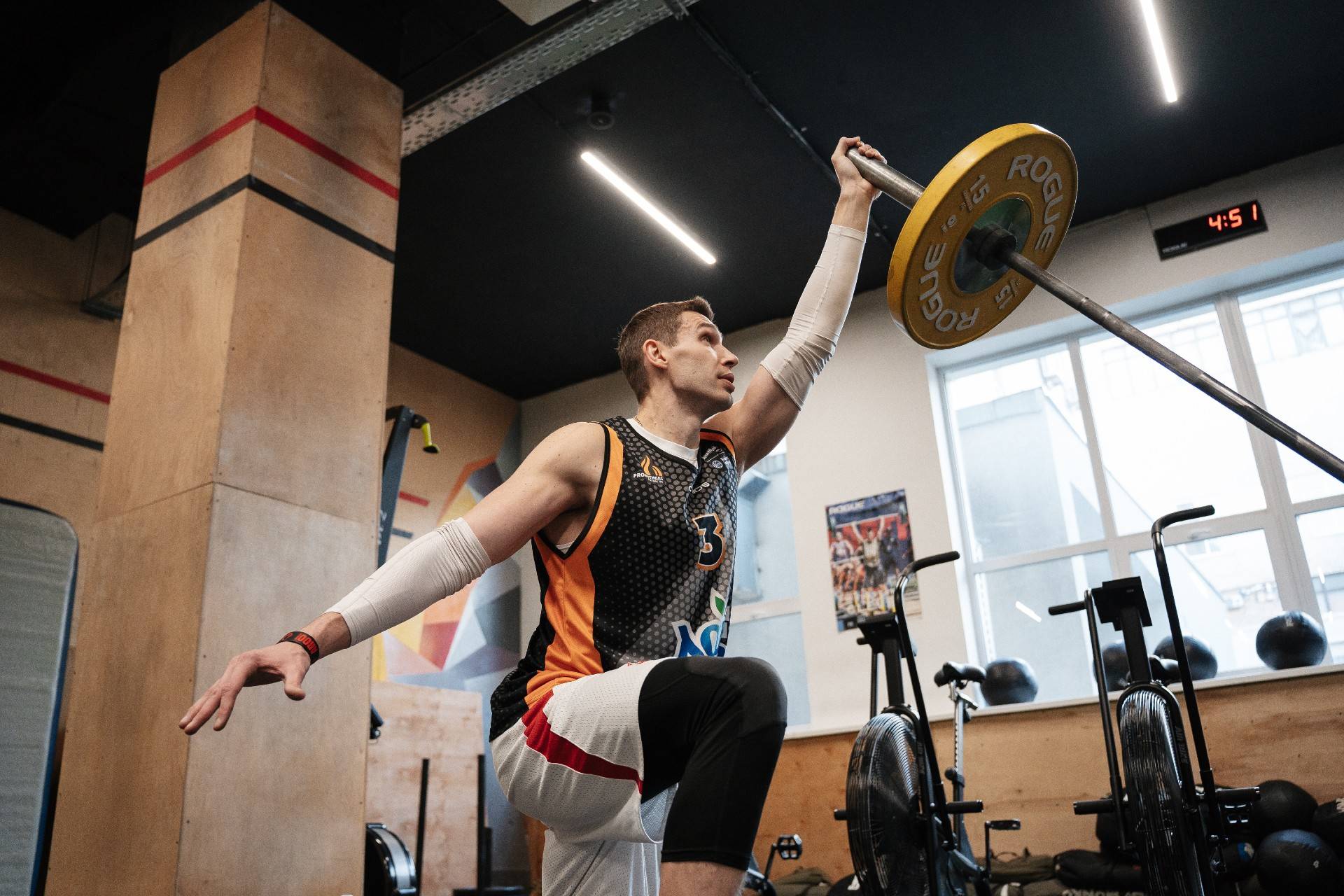
Basic Equipment You Need For Basketball Strength Training
Whilst many things can easily be done in the gym, some people might want to create their home gym setups. These home gym setups would require you to invest in some equipment. The following items would be great for helping you improve your home gym for basketball purposes:
Adjustable Bench Press
Since the bench press is part of the kit, you will essentially need to invest in the weight stand and the bench press seat. The adjustable bench press seat would help you when performing the incline and traditional bench press exercises.
Olympic Barbell
The Olympic barbell will serve many purposes. The great thing about the Olympic barbell is that you can use it for most of your exercises. It can be used for both front and back squats, while you can also use it for all the pressing exercises.
Variety Of Dumbbells
As you can see, there are a massive variety of exercises that would require the use of dumbbells. Dumbbells will make it easier for the person to perform these isolation exercises. Either you can buy yourself a set of dumbbells or you can focus on buying just one adjustable dumbbell with weight plates.
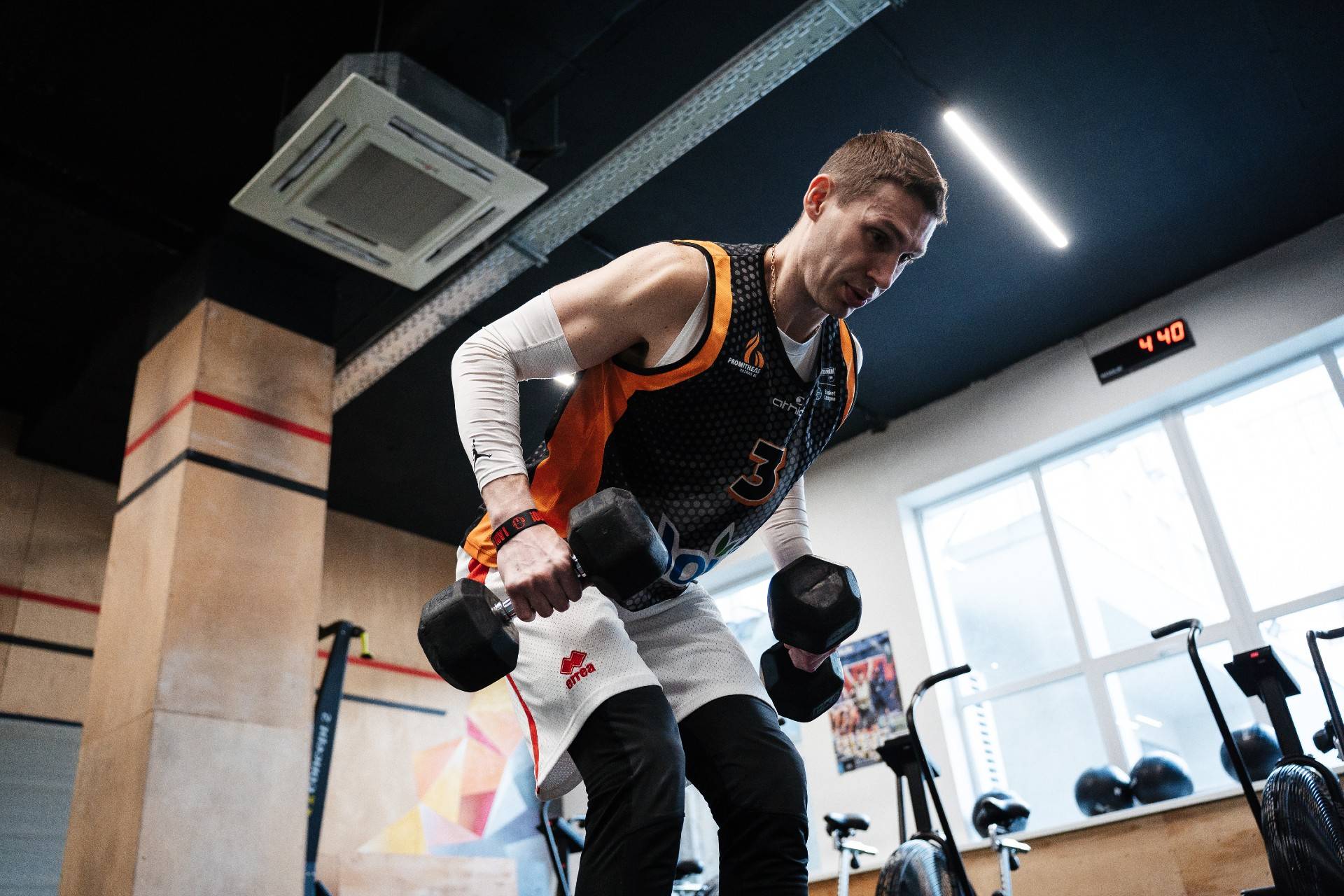
Weight Plates
Speaking of weight plates, you will need weight plates to ensure you can add weight to your specific barbells. These weight plates are often multifunctional and you can use them for a multitude of other exercises as well.
FAQ
How Often Do Basketball Players Lift Weights?
Weightlifting programs will vary depending on the player and their specific schedule. In-season schedules tend to be much lighter than their off-season counterparts. However, basketball players would on average spend around 3 days lifting weights. Some might bump it up to four.
Do NBA Players Lift Weights On Game Day?
It is not wise to lift weights on game day. Unfortunately, it could take your muscles up to 24 hours if not more to recover from strength training. Due to this, many basketball players choose to stop strength training about 2 days out from a big game.
Conclusion
Strength training for basketball is a great way to gain a competitive edge over your opponents. Basketball players live such an active lifestyle that packing on the same amount of muscle, as bodybuilders will not happen. They have different routines and diets that focus on basketball only.
However, we would love to see some of your comments and find out if you think basketball workouts with weights would be beneficial to your needs. Let us know in the comment section below.
Also read:
- Strength Training for Throwers
- Strength Training for Volleyball Players
- Strength Training for Golf Players
- Weightlifting for MMA
- Strength Training for Tennis Players
- Military Style Workout Routine
- Firefighter Workout Plan
References:
- Injury in the National Basketball Association // NCBI: https://www.ncbi.nlm.nih.gov/pmc/articles/PMC3445097/#
- 5 times when you should skip your workout and take a rest day // NCB News: https://www.nbcnews.com/better/lifestyle/5-times-when-you-shouldn-t-work-out-ncna1068281
- Resistance Training with Single vs. Multi-joint Exercises at Equal Total Load Volume: Effects on Body Composition, Cardiorespiratory Fitness, and Muscle Strength // NCBI: https://www.ncbi.nlm.nih.gov/pmc/articles/PMC5744434/
Why Trust Us?
With over 20 years in Olympic Weightlifting, our team does its best to provide the audience with ultimate support and meet the needs and requirements of advanced athletes and professional lifters, as well as people who strive to open new opportunities and develop their physical capabilities with us.
By trusting the recommendations of our certified experts in coaching, nutrition, dietology, and sports training programming, as well as scientific consultants, and physiotherapists, we provide you with thorough, well-considered, and scientifically proven content. All the information given in the articles concerning workout programming, separate exercises, and athletic performance, in general, is based on verified data. We ensure that you can rely on our professionals’ pieces of advice and recommendations that can be treated as personalized ones which will benefit you and fully meet your needs.
The product testing process is described in more detail here
Author: Sergii Putsov
Head of Sport Science, PhD
Best Results: Snatch – 165 kg,
C&J – 200 kg
Sergii Putsov, Ph.D., is a former professional weightlifter and National team member, achieving multiple medals in the 94 kg weight category at national competitions. With a Master’s degree in “Olympic & Professional Sport Training” and a Sport Science Ph.D. from the International Olympic Academy, Greece, Sergii now leads as the Head of Sport Science. He specializes in designing training programs, writing insightful blog articles, providing live commentary at international weightlifting events, and conducting educational seminars worldwide alongside Olympic weightlifting expert Oleksiy Torokhtiy.
Reviewed by: Oleksiy Torokhtiy
Olympic Weightlifting Champion
Best Results: Snatch – 200 kg,
C&J – 240 kg
Oleksiy Torokhtiy is a professional athlete boasting 20 years of experience in Olympic weightlifting. With multiple European and World titles under his belt, he has showcased his prowess in two Olympic Games (Beijing 2008 and London 2012). Upon concluding his illustrious career, Oleksiy dedicated himself to coaching. By 2022, he had conducted over 200 weightlifting seminars worldwide. He is the visionary behind an international sportswear and accessories brand known for its motto, “Warm Body Cold Mind.” Additionally, he is an esteemed author and the creator of a series of training programs and eBooks.

